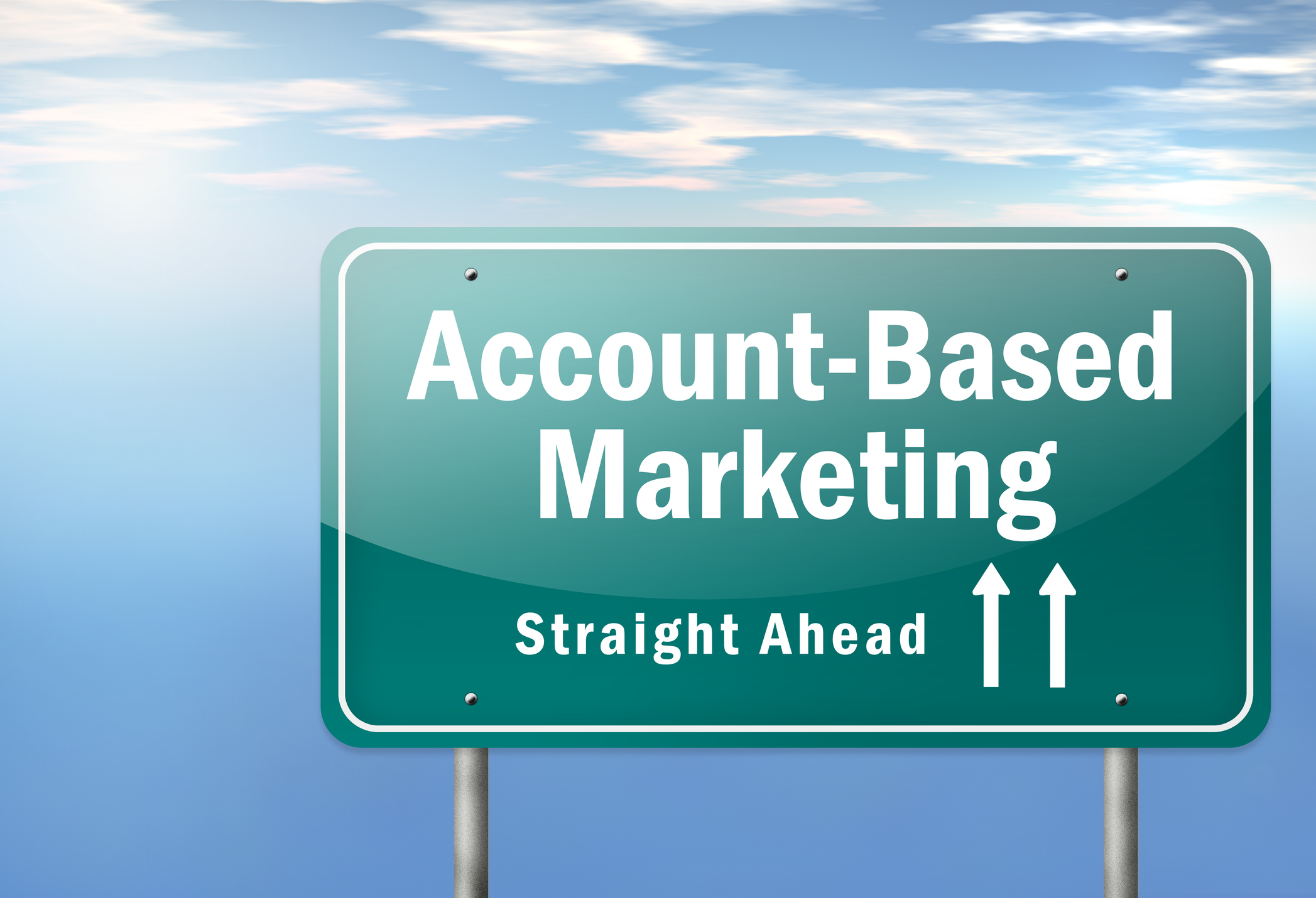The inbox is overflowing, social media notifications are relentless, and everyone seems perpetually glued to their screens. In this digital deluge, the idea of cold calling – that direct, personal outreach – might seem quaint, even intrusive. But here’s the thing: cold calling, when done strategically, remains a potent weapon in the modern salesperson’s arsenal.
While email and social media have undoubtedly transformed the sales landscape, cold calling offers unique advantages that simply can’t be replicated by a carefully crafted message. This blog delves into 7 compelling reasons why you should reconsider relegating cold calling to the sidelines. We’ll explore how cold calls can cut through the digital noise, forge genuine connections, and ultimately boost your sales success. So, ditch the preconceived notions about cold calling being a thing of the past, and get ready to discover how strategic phone outreach can breathe new life into your sales strategy.
Cold calling, often seen as an old-school tactic, remains a vital strategy in the sales arsenal for several compelling reasons. Despite the rise of digital communication, the direct approach of cold calling can pave the way for genuine connections and opportunities that other methods might miss.
Here are 7 reasons why cold calling remains important for sales success in 2024:
1. Generate New Leads with Cold Calling:
Cold calling allows you to reach potential customers who haven’t expressed interest yet. This proactive approach can open doors to entirely new markets and expand your customer base significantly.
Preparation is Key:
- Targeted Prospecting: Don’t waste time calling random numbers. Build a targeted prospect list based on your ideal customer profile (ICP). Consider factors like industry, company size, and decision-makers. Utilize online resources, industry directories, and networking events to identify qualified prospects.
- Research and Personalization: Research each prospect thoroughly before calling. Understand their business, current challenges, and potential needs. Personalize your opening pitch to showcase how your product or service addresses their specific pain points.
- Scripting for Success: Don’t rely on winging it. Develop a clear, concise script that introduces yourself, your company, and the value proposition. Practice your script to ensure a smooth, professional delivery.
Mastering the Call:
- Confident Introduction: Start with a strong opening that grabs the prospect’s attention. Introduce yourself, your company, and the reason for your call with enthusiasm and professionalism.
- Focus on Value, Not Selling: Present yourself as a problem-solver, not just a salesperson. Focus on the benefits your product or service offers and how it can alleviate their challenges.
- Active Listening and Objection Handling: Be an active listener. Pay close attention to the prospect’s concerns and tailor your pitch accordingly. Prepare responses to common objections and address them confidently.
Following Up is Crucial:
- Don’t Leave Empty-Handed: Always aim to secure a next step during the call. This could be scheduling a follow-up call, requesting an email address for further information, or setting up a demo.
- Prompt Follow-Up: After the call, send a personalized thank-you email reiterating the key points discussed and your offer for the next step.
- Persistence Pays Off: Don’t get discouraged by initial rejection. Follow up calls are essential. Persistence demonstrates your genuine interest and can lead to positive outcomes.
Additional Tips:
- Utilize Technology: Leverage technology to streamline your cold calling efforts. Use a Customer Relationship Management (CRM) system to track your calls, prospects, and interactions. Consider call centre software with features like call recording and analytics to identify areas for improvement.
- Embrace Metrics: Track your cold calling performance. Monitor metrics like call volume, connection rates, appointments set, and deals closed. Analyze this data to identify what’s working and adjust your approach accordingly.
- Positive Mindset: Maintain a positive and enthusiastic attitude throughout your calls. Your energy is contagious, and genuine enthusiasm can make a positive impact on potential customers.
By implementing these strategies and maintaining a consistent cold calling practice, you can effectively generate new leads, build relationships with potential customers, and ultimately drive sales success. Remember, cold calling is a skill that takes practice and refinement. Don’t get discouraged – stay focused, persistent, and continuously hone your craft to become a cold calling master.
2. Build Relationships:
Cold calling often viewed as a transactional interaction, can surprisingly be a powerful tool for building relationships with potential customers. A well-executed cold call can be the starting point for building a strong relationship with a potential customer. By taking the time to understand their needs and challenges, you can establish yourself as a trusted advisor. Here’s how to leverage cold calls to foster genuine connections and turn prospects into long-term partners:
Focus on Connection, Not Just Conversion:
- Shift Your Mindset: View cold calling as an opportunity to initiate a conversation, not just pitch a product. Focus on building rapport and understanding the prospect’s needs.
- Active Listening is Paramount: Listen attentively to their challenges, frustrations, and current solutions. Ask insightful questions to demonstrate genuine interest in their situation.
- Find Common Ground: Look for areas of shared experience or industry trends to connect with the prospect on a human level.
Highlight Expertise, Not Just Features:
- Position Yourself as a Trusted Advisor: Showcase your knowledge of their industry and the challenges they face. Offer insights and suggest solutions beyond just your product.
- Focus on Value, Not Just Selling: Frame your product or service as a tool to help them achieve their goals, not just a sales pitch. Demonstrate how it directly addresses their specific needs.
- Offer Helpful Resources: Even if they’re not ready to buy now, provide valuable resources like industry reports, white papers, or webinars that address their pain points.
Transform the Transaction into a Conversation:
- Personalize Your Approach: Do your research and tailor your opening pitch to their specific company and challenges. A one-size-fits-all approach won’t build trust.
- Be Transparent and Authentic: Be upfront about who you are and why you’re calling. Avoid pushy tactics or misleading information. Honesty fosters trust and builds stronger relationships.
- Respect Their Time: Be mindful of their schedule. Keep your call concise and offer to schedule a more detailed follow-up discussion if they’re interested.
Lay the Foundation for Long-Term Partnership:
- Set Clear Expectations: Be transparent about the sales process and how you can continue to add value after the initial call.
- Offer Ongoing Support: Don’t disappear after the call. Provide ongoing support and resources, even if they don’t convert immediately. This demonstrates your commitment to their success.
- Stay Connected: Schedule regular follow-up calls or emails to check in, offer updates, or provide additional resources. Building a long-term connection is key.
Remember: Building relationships through cold calling takes time and consistent effort. By prioritizing genuine connection, value-driven conversations, and ongoing support, you can transform cold calls into the foundation for strong and lasting partnerships with your customers.
3. Qualifying Leads: Separating Diamonds from Rough
Cold calling can be a goldmine for lead generation, but not every call will translate to a paying customer. The key lies in effectively qualifying leads during your calls to identify those with the highest potential for closing a deal. By engaging in conversation, you can quickly assess a prospect’s needs, budget, and decision-making authority, allowing you to prioritize your sales efforts.
Here’s how to leverage cold calling to qualify leads and optimize your sales pipeline, going beyond the points mentioned previously:
Asking the Right Questions: Dig Deeper
- Uncover Needs and Challenges: Don’t settle for surface-level answers. Ask probing, open-ended questions that encourage the prospect to elaborate on their current approach, pain points, and frustrations. For example, instead of a simple “Are you happy with your current solution?” ask “What are some of the challenges you face with your existing process?” This allows them to articulate their specific needs in greater detail, giving you valuable insights into their decision-making criteria.
- Decision-Making Authority and Budget Alignment: Identify the key decision-maker early in the call and tailor your conversation accordingly. Questions like “Who would be the final say on implementing a new solution?” or “Do you have a budget allocated for addressing this challenge?” can help you determine if you’re speaking to the right person and if their budget aligns with your pricing structure. If they’re not the decision-maker or their budget doesn’t fit, politely ask if they can connect you with the relevant person or offer resources for future reference.
Active Listening and Filtering: Beyond Yes or No
- Listen for Buying Signals: Pay close attention to the prospect’s responses, not just for verbal affirmations but also for subtle cues that indicate interest. Buying signals can include asking in-depth questions about your product or service, expressing a sense of urgency to address their challenges, or mentioning specific features that align with their needs.
- Identify Red Flags and Respectfully Move On: Be mindful of red flags that suggest a low chance of conversion. This could include a complete lack of interest in your offering, a clear preference for a competitor’s product that you can’t realistically compete with, or a budget that falls significantly short of your pricing options. In such cases, thank them for their time and politely end the call. Your time is valuable, so focus on those who demonstrate genuine interest and have the potential to become valuable customers.
Setting the Stage for the Next Step: Building Relationships
- Offer Solutions, Not Just Products: Based on your conversation, suggest specific ways your product or service can address their challenges and provide tangible benefits. Focus on the outcomes they desire and how your offering can uniquely help them achieve those results. Frame your product or service as an investment in solving their problems, not just a line item on a budget.
- Gauge Interest in Next Steps and Personalize the Approach: Before ending the call, assess their interest in learning more. Don’t pressure them into a rigid sales funnel. Offer options based on their level of engagement. For highly interested leads, propose scheduling a demo or a personalized consultation to delve deeper into their specific needs. For those who need more nurturing, offer to send them additional information, case studies, or industry reports relevant to their challenges. This demonstrates your value proposition and keeps you top-of-mind for future consideration.
Utilizing Tools and Technology for Continuous Improvement
- Call Scoring Systems: Consider using call scoring software that evaluates your calls based on pre-defined criteria like the questions asked, keywords mentioned, buying signals identified, and the overall tone of the conversation. This data can help you identify areas for improvement in your qualification process. Analyze your call scores regularly to identify common strengths and weaknesses in your approach.
- CRM Integration and Data Analysis: Integrate your call center software with your Customer Relationship Management (CRM) system. This allows you to seamlessly log call details, track lead interactions, and prioritize qualified leads for further nurturing by your sales team. Analyze the data collected through your CRM to identify trends and patterns in successful lead qualification. This can inform future call strategies and help you refine your questioning techniques to better identify high-potential leads.
By implementing these strategies and continuously refining your approach, cold calling can become a powerful tool for qualifying leads. Remember, qualifying leads is an ongoing process that requires active listening, insightful questioning, and the ability to identify both buying signals and red flags.
By effectively separating the diamonds from the rough during your cold calls, you can build a robust sales pipeline filled with qualified leads who are more likely to convert into successful customers.
4. Sharpen Your Communication Skills with Cold Calling: From Stumbling to Stellar
Cold calling, often dreaded for its initial awkwardness, can be a surprisingly effective training ground for honing your communication skills. Cold calling forces you to hone your communication skills. You learn to be clear, concise, and persuasive under pressure. This ability to effectively communicate the value of your product translates well to other areas of sales, like presentations and email follow-ups.
Here’s how to leverage cold calling to transform from a fumbling beginner to a communication maestro, going beyond the points mentioned previously:
Embrace the Learning Curve:
- Mindset Shift: From Dreading to Thriving: View cold calling not as a daunting chore but as a valuable training opportunity. Approach each call with the intention to learn and improve your communication skills. This positive mindset fosters growth and helps you overcome the initial fear of rejection.
- Start Small and Celebrate Milestones: Don’t overwhelm yourself by aiming for marathon-length calls initially. Begin with shorter, focused interactions, gradually increasing the duration and complexity as your confidence grows. Celebrate every milestone, whether it’s securing a brief conversation, effectively handling an objection, or scheduling a follow-up call. These small wins reinforce positive reinforcement and keep you motivated on your communication journey.
Active Listening: The Foundation of Connection
- Mirror and Match for Rapport: Pay close attention to the prospect’s tone of voice, language patterns, and communication style. Subtly mirror these elements to build rapport and establish a sense of connection. People tend to respond more favorably to those who seem similar to them.
- Uncover Needs Through Powerful Questions: Move beyond generic questions. Craft open-ended questions that delve into the prospect’s specific challenges, current solutions, and desired outcomes. For example, instead of “Are you happy with your current process?” ask “What are some of the frustrations you encounter with the way things are done now?” This deeper understanding allows you to tailor your value proposition and address their specific needs more effectively.
Masterful Delivery: Confidence Through Clarity
- Speak with Conviction, Not with a Script: While having a basic script as a guide is helpful, avoid sounding robotic or reading verbatim. Focus on delivering your message with conviction and genuine enthusiasm. Be transparent and upfront about your purpose – you’re calling because you believe your product or service can genuinely help them.
- Storytelling – The Art of Engagement: Facts and figures tell, but stories sell. Weave storytelling elements into your communication. Use concise anecdotes or case studies to illustrate the benefits your product or service offers and how it has helped similar businesses achieve success. Stories are memorable and evoke emotions, making your message more impactful.
Embrace Feedback and Technology for Continuous Improvement
- Seek Mentorship and Peer Coaching: Don’t shy away from seeking guidance from experienced sales professionals or mentors. Ask for feedback on your communication style, call recordings, and handling of objections. Peer coaching sessions with colleagues can also be valuable for exchanging constructive criticism and sharing best practices.
- Utilize Call Analytics Tools: Many call center software solutions offer call recording and analytics features. Leverage these tools to review your calls after the fact. Identify areas where you hesitated, stumbled over your words, or could have delivered your message more persuasively. Analyze your performance metrics like talk time, average handle time, and call resolution to identify areas for improvement.
The Journey Continues: Sharpening Your Communication Edge
- Become a Master of Objection Handling: Objections are inevitable in sales, and cold calling is no exception. Prepare for common objections beforehand and practice your responses. Listen attentively to the prospect’s concerns, acknowledge their validity, and then confidently address them with well-rehearsed counterpoints and solutions. A well-handled objection can actually strengthen the conversation and demonstrate your expertise.
- Stay Ahead of the Curve: The business landscape is constantly evolving. Stay up to date on industry trends, competitor offerings, and the ever-changing needs of your target audience. Expand your vocabulary and communication skills to keep pace with the evolving market dynamics. By continuously learning and refining your communication style, you can ensure your message resonates with prospects on a deeper level.
Remember, cold calling is a marathon, not a sprint. Embrace the learning process, celebrate your milestones, and continuously seek improvement. With dedication, practice, and the right approach, you can transform cold calling into a powerful tool for sharpening your communication skills and propelling you towards becoming a confident and persuasive communicator in any situation.
5. Get Direct Customer Feedback with Cold Calling:
Cold calls provide an opportunity to gather valuable customer feedback firsthand. While cold calling isn’t the ideal method for gathering in-depth customer feedback, it can be a starting point to identify potential leads who might be open to providing more detailed insights later. You can learn about their buying preferences, challenges, and industry trends, which can inform your sales strategy and product development.
Here’s how to leverage cold calling to indirectly acquire direct customer feedback:
Plant the Seeds for Future Feedback:
- Identify Potential Feedback Champions: During your cold call, focus on identifying prospects who are genuinely enthusiastic about your product or service and seem open to discussing their experiences. These potential “feedback champions” might be using your offering successfully or facing challenges you can address.
- Express Interest in Their Perspective: Subtly express your interest in understanding their customer journey and how your product or service impacts their business. For example, you could say, “We’re always looking for ways to improve, and hearing from customers like yourself is invaluable. Would you be open to sharing your thoughts on how [your product/service] has impacted your business at some point?”
- Offer Incentives for Detailed Feedback: Consider offering a small incentive, like a gift card or a free consultation, in exchange for their participation in a more in-depth feedback session later on. This incentivizes them to dedicate their time and provides a tangible reward for their valuable insights.
Leverage the Call to Inform Future Feedback Methods:
- Gauge Interest in Different Feedback Channels: During the call, inquire about their preferred method for providing detailed feedback. This could be an online survey, a phone interview, or an in-person meeting. Understanding their preference helps you tailor your approach and increase the likelihood of participation.
- Gather Basic Customer Information: Collect their contact information (with permission) during the call. This allows you to follow up later with a more detailed feedback request through their preferred channel.
Turning Cold Calls into Warm Feedback Opportunities:
- Follow Up with Personalized Requests: Once you’ve identified potential feedback champions, send personalized follow-up emails or calls requesting their participation in your feedback initiative. Highlight their specific experience and how their insights can be valuable to your company’s growth.
- Express Gratitude and Appreciation: Thank them for their time and willingness to contribute. Express your genuine appreciation for their feedback, as it helps you improve your offerings and serve customers better.
Remember, Cold Calling is a Stepping Stone:
- Cold Calling Lays the Groundwork: Cold calling can help you connect with potential customers, gauge their interest, and identify those who might be receptive to providing more detailed feedback in the future. However, it’s not the most effective method for conducting in-depth customer interviews or gathering comprehensive feedback data.
- Combine Cold Calling with Other Feedback Strategies: Utilize cold calling alongside other feedback collection methods like online surveys, email campaigns, or social media polls. This multifaceted approach allows you to gather a broader range of customer perspectives.
By strategically using these techniques, you can leverage cold calling to identify potential sources of valuable customer feedback and pave the way for more in-depth conversations later on. Remember, building trust and demonstrating a genuine interest in their experience are key to encouraging customers to share their insights and contribute to your feedback initiatives.
6. Conquering Objections: Mastering the Art of Response
Cold calling is an art form, and overcoming objections is a crucial skill for any salesperson who wants to succeed. By anticipating common concerns and having prepared responses, you can effectively address them and move the conversation forward. Here’s a breakdown of effective strategies to address common objections you might encounter during cold calls, turning them into opportunities to move the conversation forward:
Preparation is Key:
- Anticipate Common Objections: Before dialing a single number, research and brainstorm potential objections you might face. Objections often fall into categories like budget constraints, lack of need, time limitations, or existing vendor relationships. Having anticipated responses ready allows you to react calmly and confidently.
- Practice Makes Perfect: Rehearse your responses to these objections beforehand. Role-play with colleagues or record yourself practicing refining your delivery. The more comfortable you are with your responses, the more persuasive you’ll sound during the actual call.
Active Listening and Empathy:
- Acknowledge and Validate Concerns: Don’t interrupt or dismiss objections. Acknowledge the prospect’s concerns and show empathy. Phrases like “I understand your hesitation” or “That’s a valid concern” demonstrate that you’re actively listening and appreciate their perspective.
Addressing Objections with Confidence:
- Focus on Value, Not Features: Don’t get bogged down in simply reiterating product features. Shift the focus to the value proposition your product or service offers and how it directly addresses their specific concerns raised in the objection.
- Offer Solutions and Provide Evidence: Don’t just defend your product; present solutions. For example, if they mention budget limitations, highlight flexible payment options or plans tailored to smaller businesses. Quantify the value proposition with data or case studies demonstrating how your offering has helped similar companies save money or achieve specific results.
Turning Objections into Opportunities:
- Use Objections as Steppingstones: A well-handled objection can actually strengthen the conversation. Addressing their concerns demonstrates your knowledge of their industry and your confidence in your product’s ability to solve problems.
- Open the Door for Further Discussion: Use the objection as an opportunity to delve deeper into their needs. Ask clarifying questions to understand their specific situation and tailor your response accordingly. This can lead to a more productive conversation and a higher chance of overcoming the initial objection.
Examples of Objection Handling:
- Objection: “We’re happy with our current solution.”
- Response: “That’s great to hear! However, many of our clients using similar solutions have found that [your product/service] helps them achieve [desired outcome] by [mentioning a specific benefit]. Would you be open to a brief discussion to see if there might be areas where we can add value?”
- Objection: “It’s not in our budget right now.”
- Response: “I understand budget limitations are a concern. We offer flexible payment options and plans to fit various budget constraints. Perhaps we can schedule a quick call to discuss how our solution can potentially save you money in the long run by [mentioning a specific cost-saving benefit].”
Remember, Persistence Pays Off:
- Don’t Be Discouraged by Initial Resistance: Not every objection signifies a dead end. Sometimes, it takes multiple calls or a well-timed follow-up email to overcome an initial objection and re-engage the prospect. Persistence demonstrates your genuine interest in helping them and can lead to positive outcomes.
By anticipating objections, actively listening to concerns, and presenting solutions with confidence, you can effectively navigate the challenges of cold calling. Remember, objections are a natural part of the sales process. With the right preparation and approach, you can transform objections into opportunities to build trust, showcase your product’s value, and ultimately secure more sales.
7. Tracking Success: Measurable Results
Cold calling, while sometimes viewed as an outdated tactic, remains a valuable tool for generating leads and driving sales when paired with a data-driven approach. Here’s how to measure the effectiveness of your cold calling efforts and optimize your strategy for maximum impact:
Call Activity Metrics:
- Number of Calls Made: This is a baseline metric that reflects the overall volume of your calling efforts.
- Call Connection Rate: This represents the percentage of calls that reach a live person compared to voicemails or unanswered calls. Aim for a higher connection rate to maximize your talk time and potential interactions.
- Average Call Duration: Track the average length of your calls. While shorter calls can be good for initial contact, some situations might require longer conversations for in-depth discussions.
Lead Generation Metrics:
- Number of Leads Generated: This reflects the total number of qualified leads identified through cold calling. A qualified lead demonstrates genuine interest and has the potential to convert into a paying customer.
- Lead Conversion Rate: This metric shows the percentage of qualified leads that ultimately convert into sales. Track this over time to assess the effectiveness of your cold calling in generating high-quality leads.
Sales Metrics:
- Number of Appointments Set: Track the number of appointments scheduled with qualified leads for follow-up discussions, demos, or presentations. This indicates progress in moving leads through the sales funnel.
- Sales Closed from Cold Calls: The ultimate measure of success is the number of sales directly closed from cold calling interactions. This metric reflects the immediate return on investment (ROI) from your calling efforts.
Utilizing Technology for Data Collection and Analysis:
- CRM Integration: Integrate your cold calling software with your Customer Relationship Management (CRM) system. This allows seamless logging of call details, lead information, and appointment scheduling, providing a centralized location for tracking your cold calling activities and their impact on the sales pipeline.
- Call Analytics Tools: Utilize features offered by many call center software solutions. These tools can track call duration, identify keywords mentioned during conversations, and even record calls for quality assurance purposes. Analyze these recordings to identify areas for improvement in your approach, communication style, and objection handling.
Leveraging Data for Strategic Improvements:
- Identify Strengths and Weaknesses: Analyze your call activity metrics to identify areas where you excel and areas needing improvement. For instance, a low connection rate might indicate the need for better call timing or targeting a more relevant audience.
- Prioritize Efforts for Maximum Impact: Focus your calling efforts on strategies that generate the highest number of qualified leads and sales. This data-driven approach ensures you’re maximizing your time and resources for the greatest return.
- Refine Your Pitch and Targeting: Analyze the call recordings and identify common objections or areas where your value proposition wasn’t clearly communicated. Refine your pitch to address these concerns and tailor it to resonate better with your target audience.
- Invest in Ongoing Training: Use the insights gleaned from data to identify areas where your sales team can benefit from additional training. This could include communication skills development, objection handling techniques, or product knowledge improvement programs.
Ultimately, cold calling is a numbers game, and consistent effort is key. By tracking the right metrics, implementing a data-driven approach, and continuously refining your strategy, you can transform cold calling from a random activity into a measurable and successful tool for driving sales growth.
The Takeaway: Mastering the Modern Cold Call
In today’s information-saturated world, the cold call might seem like a blunt instrument compared to the laser focus of digital marketing. But as we’ve explored, it remains a powerful tool for generating leads, building relationships, and ultimately driving sales. Remember, the key isn’t to abandon digital tools altogether, but to leverage their strengths in tandem with a modern approach to cold calling.
Refine your research to ensure your calls are relevant and timely. Leverage social media and marketing automation platforms to identify potential customers and gather valuable insights. Personalize your pitch by going beyond basic contact information. Tailor your message to the specific needs and challenges of the person you’re calling. Instead of a robotic script, focus on building genuine connections. Listen attentively, ask insightful questions, and demonstrate a genuine understanding of their situation.
By mastering the art of the modern cold call, you can create a winning sales strategy that cuts through the noise and gets results. Don’t be afraid to embrace the power of human connection. In a world dominated by digital interactions, a well-timed and well-executed phone call can be a refreshing change of pace, leaving a lasting impression and opening the door to a successful and mutually beneficial conversation. So, pick up the phone, hone your cold calling craft, and watch your sales pipeline flourish.
Remember, cold calling is most effective when used as part of a comprehensive lead gen and sales strategy. By combining it with other techniques like email marketing and social selling, you can create a well-rounded approach to generate leads, build relationships, and close deals.
If you’re considering taking a step forward in your lead gen efforts, exploring partners like Cognition could provide you analytics-driven lead generation solutions with tailored comprehensive programs delivering high-quality actionable leads and business growth.











